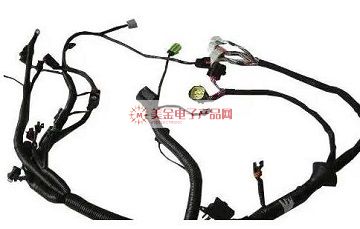Categorization:Product Information
Electrical Wiring Harness Design Requirements Specification Standards are a set of standards and specifications used in the field of electrical engineering to guide the design of electrical wiring harnesses. An electrical wiring harness is an assembled structure that bundles multiple wires, cables, or optical fibers together to transmit power, signals, or data. They are commonly used in a variety of equipment and systems such as automotive, aerospace, electronics and industrial equipment. In order to ensure the quality, safety and reliability of electrical wiring harnesses, a number of normative standards have been developed, and the following are some of the important requirements: Material selection: Normative standards usually require the use of materials that meet specific requirements, such as conductive materials, insulating materials, flame-retardant materials and so on. These materials need to be characterized by high temperature resistance, corrosion resistance, abrasion resistance and insulating properties. Dimensional and Geometric Requirements: Specification standards define dimensional ranges, tolerances and geometric requirements for electrical wiring harnesses. These requirements ensure that the harness can be properly installed, connected and arranged, as well as adapted to the space constraints of the equipment. Electrical Characteristics: The design requirements specification for electrical harnesses includes requirements for electrical characteristics such as resistance, capacitance, inductance, insulation resistance, and shielding effectiveness. These requirements help to ensure that the harnesses perform consistently and reliably in transmitting power and signals. Bending and Tensile Requirements: Electrical wire harnesses typically encounter bending and tensile forces during use, so the specification standard will specify the bending radius, greater tensile force, and twisting requirements of the wire harness to ensure that the wire harness is not subjected to excessive stresses that could damage it. Environmental Adaptability: Electrical harnesses may be used in a variety of environmental conditions such as high and low temperatures, humidity, chemical exposure, etc. The code standard will require that the harnesses be used in a variety of environmental conditions. Codes and standards will require harnesses to be resilient and durable in different environments. Marking and Identification Requirements: Electrical wiring harnesses need to be marked and identified during manufacture and installation to facilitate identification of the harness's purpose, function, and connections. Codes and standards often specify marking methods, color codes, and labeling requirements. Safety requirements: Electrical wiring harness design requirements specification is also concerned with the safety of the harness, including fire performance, insulation and protective measures.

-About US dollars electronic products network platform related to the introduction and sales of products brief: US dollars electronic products network - a professional agent / production / sales of a variety of {connectors | wiring harness | wire and cable products }; if you have a related [connectors | wiring harness | wire and cable products] purchasing / sourcing needs or would like to buy / to understand which connectors | wiring harness | wire and cable products we can provide solutions, please contact the following Division I business personnel; If you have a related [connectors | wiring harness | wire and cable products] sales / resources and promotion needs, please click "→ Business Cooperation ←" to discuss with a person! If you have related [connectors | wire harness | wire and cable products] sales / resources and promotion needs, please click on the "¡¡ Business Cooperation ←" to discuss with a person!